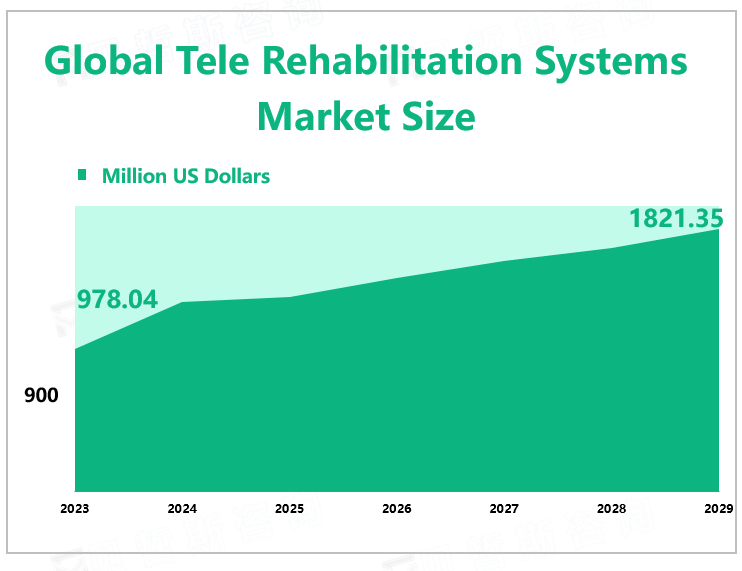Global Tele Rehabilitation Systems Market Overview
According to Global Market Monitor, the global tele rehabilitation systems market size will reach $978.04 million in 2024 and is expected to grow to $1821.35 million by 2029.
Increasing Aging Population Stimulates the Need for Tele Rehabilitation.
As people age, they are more prone to physical dysfunction and chronic diseases, further increasing the need for medical assistance to provide quality services. Tele-rehabilitation provides quality services and promotes access to rehabilitation services for older persons, who have difficulty accessing rehabilitation services due to mobility limitations. According to World Health Organization estimates, the number of people over 60 years old will reach about 1.2 billion by 2025 and will continue to rise to 2 billion by 2050.
Policies and Regulations Are Conducive to Regulating the Development of the Industry.
Due to the availability of state-of-the-art medical technologies, rising consumer adoption of healthcare services, increasing prevalence of chronic diseases, and advancements in rehabilitation technology, awareness of remote patient monitoring is growing and there is a growing focus on improving the quality of tele-rehabilitation services to improve the overall patient experience. In August 2023, the American Telemedicine Association (ATA) released new Health Data Privacy Principles aimed at ensuring that telemedicine services adhere to standards regarding patient safety, data privacy, and information security. The principles aim to facilitate patient access to telemedicine services while raising awareness of telemedicine practices.
In addition, this is due to the increasing adoption rate of tele-rehabilitation services, the increase in the elderly population, the surge in healthcare infrastructure, the increase in investment in the provision of tele-rehabilitation services, and the increase in various government initiatives to promote digital health technologies.

Market Drivers
The increasing incidence of various diseases such as traumatic brain injury, cerebrovascular accidents and developmental delays in the pediatric population are some of the factors that are expected to increase the demand for tele-rehabilitation services globally. These conditions prevent patients from being physically active, thus increasing the demand for these services. In addition, tele-rehabilitation contributes to a significant reduction in healthcare costs as fewer patients travel to hospitals to meet with doctors for rehabilitation services, which is expected to further drive the market growth.
The increasing adoption of digital technologies in the healthcare industry and the increasing penetration of smartphones and the Internet globally are expected to drive the tele-rehabilitation market. In addition, various initiatives have been undertaken by public and private institutions. For example, the American Telemedicine Association's Special Interest Group on Telemedicine is a key resource for rehabilitation professionals who want to incorporate information and communication technologies into clinical best practices, advocacy, and the delivery of rehabilitation services. These initiatives are believed to have increased awareness of tele-rehabilitation services and are expected to drive the market growth.
|
Drivers
|
Rising Geriatric Population |
|
Rising Adoption of Tele Rehabilitation Systems |
|
|
The Broad Application of Digital Technologies and Internet |
|
|
Limitations |
Complexity in Operation |
|
Lack of Contact with Doctors and High Cost |
We provide more professional and intelligent market reports to complement your business decisions.